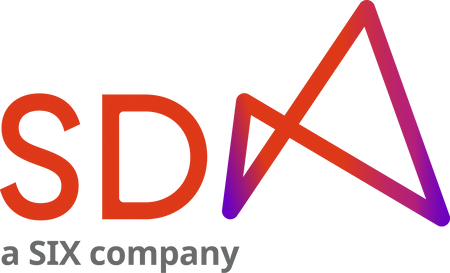In this interview, Stephan Kunz, Business Head at SDX Web3, shares his views on recent crypto market developments and what this means for SDX Web3 and its clients going forward. He anticipates what impact greater institutional adoption will have on crypto markets and the most promising areas for development. Stephan will also discuss why SDX Web3 is uniquely positioned in a time of immense crypto market transformation and maturation.
Hello Stephan! The last few months of 2022 were certainly turbulent for the crypto market. What trends do you see emerging in 2023?
Overall, I think that 2023 will be a year of change and transformation as the industry shifts to a more mature operating model.
On the crypto side, we will see a clear push towards more structured, regulated, and risk-transparent set-ups, following the increased scrutiny from regulators, investors and the general public in the wake of the FTX collapse and the other notable failures over the past year. Payment and banking services providers are coming under greater pressure with respect to their role in enabling crypto providers. Organizations such as the WorldBank and the BIS, whilst favorable towards technology applications, have been increasingly vocal about the risks associated with unregulated crypto activities. All this is creating a drive towards a more structured market with an increasing level of regulation for all participants depending on the risks posed to consumers and to the overall market.
Crypto market participants are clearly pushing to become regulated and expanding along the value chain to embrace the new environment, as we’ve seen in the case of Kraken Bank, for example. On the client side, moving in lock-step, there is a renewed awareness that the traditional risks – including greater recognition of counterparty risk and liquidity risk – apply in this space. This leads to a clear drive towards business and counterparty relationships with transparent and ideally regulated entities.
With respect to securities, it seems now widely acknowledged and accepted by TradFi that distributed ledger technology (DLT) will form a relevant part of the mid- to long-term industry infrastructure. Wholesale players, central banks, and infrastructure providers like SWIFT, are clearly advancing respective initiatives. At the same time, we see a trend towards set-ups involving a public layer 1 with layer 2 overlays (as opposed to private chain set-ups). This is in line with our own vision for the industry, where we see an industry backbone consisting of both private and public chains as an interconnected network.
In summary, I see this as a trend favoring and supporting players like SDX Web3, which offers institutional-grade, fully compliant products and solutions.
How has the growth of decentralized finance (DeFi) impacted institutional investment in cryptocurrencies?
So far, DeFi applications and adoption have been dominated by retail investors and crypto-native institutions. We are now starting to see a growing appetite for experimentation with DeFi from traditional players – such as Project Guardian – given the clear advantages from a cost and availability perspective.
I am convinced that such solutions will play a role as we advance, albeit in a more controlled and regulated setting, focusing on addressing questions around, for example, governance, regulation & compliance, liabilities, taxation, amongst others.
What is the missing piece in the puzzle when it comes to the institutional adoption of crypto assets?
When it comes to market structure and the crypto asset environment, we are looking for two things:
- Clear and – ideally – harmonized rules, regulations and legal treatment around all the activities and aspects associated with digital assets, including for example token & asset classification, DeFi structures but also aspects like staking.
- A transition towards regulated providers, both on the intermediary and the infrastructure sides. Then there are additionally other elements, which I would call industry enablers, including aspects such as on-chain payment rails or digital identity solutions – all of which create an enabling ecosystem around digital asset markets.
According to a recent survey by Fidelity Digital Assets, 70% of institutional investors believe cryptocurrencies have a place in their investment portfolios. Is the growing institutional interest likely to drive demand for cryptocurrencies, and could this result in increased market liquidity and reduced volatility?
That would undoubtedly be my expectation. Combined with a more structured market environment, this should help drive market efficiency and reduce arbitrage imbalances and associated opportunities. I anticipate a lot of this development to be driven forward through the derivative markets, and this is a key reason for our joint SDX initiative with SBI, a Japanese firm, to build AsiaNext, a new crypto derivatives exchange in Singapore.
How can SDX support institutional clients in crypto markets?
Our ability to support institutional clients as they adopt Web3 services arises from our unique position as a dedicated digital markets infrastructure (DMI) provider that can also leverage the SIX Group’s wider capabilities.
Firstly, we offer our clients and the wider market a set of institutional-grade, compliant services in the form of our Custody and Staking products, data access through BFI, and the development of an institutional marketplace in the form of AsiaNext. We also connect these services to other services across the SIX Group, such as post-trade services or collateral management services in collaboration with SIX SIS and SIX Repo.
Secondly, we work jointly with our colleagues in the SDX securities business to push forward the development of the overall digital asset ecosystem on multiple fronts.
About SDX Web3
SDX Web3 is a leading crypto service and infrastructure provider for institutional clients who aim to scale their digital asset business. Founded in 2022 as part of SIX Group, one of Europe’s leading providers of financial market infrastructure, SDX Web3 adheres to the highest quality and security standards in providing institutional-grade infrastructure services. SDX Web3 allows banks and other institutions to concentrate on their core business by providing them with efficient access to public blockchain infrastructure.

